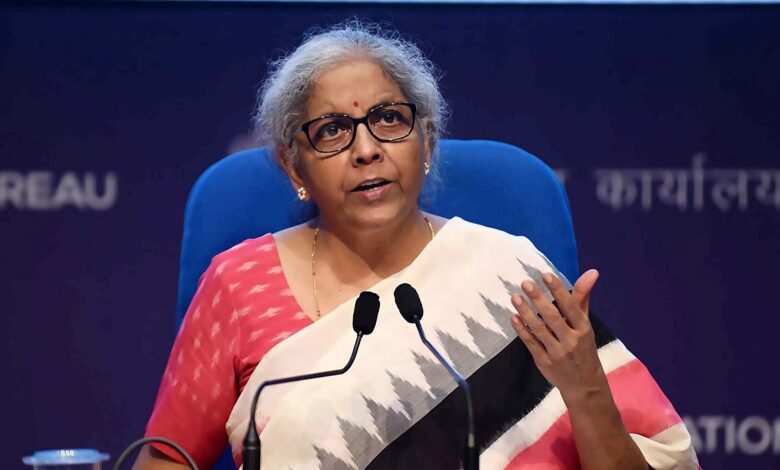India headed for robust economic growth, says FM

Describing the Indian economy’s recovery from the COVID-19 pandemic as ‘distinct’ and ‘pronounced’, Finance Minister Nirmala Sitharaman on Monday exuded confidence about India posting robust economic growth this decade.
Sitharaman is here to attend the annual spring meeting of the International Monetary Fund and the World Bank.
In her first public appearance before the Atlantic Council think-tank, the finance minister told a select group of Washington audience about how the people together with the Indian government successfully faced the challenge posed by COVID-19 and the subsequent lockdowns.
“So, as we look at India, given the pandemic and the recovery from it, and also where we stand today, we see the decade before us…2030 as a very robust decade where India would definitely be one of the fastest growing economy,” she said.
She noted that before and after COVID-19, India undertook various structural reforms and also converted the pandemic into an opportunity to push them further.
The minister said a distinguishing feature of India’s response to the pandemic has been an emphasis on supply-side reforms rather than total reliance on demand management.
She listed out the successful rollout of GST and digitisation programs as some of the key elements of the reforms that were started before the pandemic.
“…prior to the pandemic, because digitisation was happening, we brought in a financial inclusion programme never seen anywhere in the world,” she said.
Also as a result of the programs, which she described as digital revolution, three of the largest public digital platforms in the world are from India — Aadhaar, which is the largest unique digital identity platform; UPI, which is the largest digital payments ecosystem; and Co-WIN, the largest vaccination platform, Sitharaman said.
India’s low-cost, at-scale digitisation improves ease of living for its citizens in all income categories, the minister noted.
“Adoption of technology, I am so pleased to see, that it has gone down to villages… They’re now very savvy about using it. And of course the India stack has also done a bit more by saying you don’t need to have a smartphone, you can do it to with a feature phone. So technology is also moving to involve many more people,” she pointed out.
Sitharaman said along with the response to the pandemic, the government undertook various reform measures, including supply-side reforms.
During the last few years, the Modi government has focused on structural reforms such as launch of PM-GatiShakti programme, reduction in corporate taxes, ease of paying taxes, ending tax disputes, removal of retrospective taxation, privatisation of Air India, production linked incentives for various sectors, and labour law reforms, she said.
According to the minister, during this period, the Indian government has made sincere efforts to achieve macroeconomic stability by recapitalising banks and increasing foreign exchange reserves.
The banking system went through a decade of repair to work off the excesses of the boom of the previous decade; banks were recapitalised and some lenders were merged, she said, adding there has been a consistent effort to reduce the NPAs in the banking system.
Sitharaman told the audience that the government focus is on pushing capital expenditure with the aim to promote growth without losing sight of its moral obligation towards the underprivileged.
The finance minister in the Budget had announced an increase in capital expenditure by a sharp 35.4 per cent to a record Rs 7.50 lakh crore, from Rs 5.54 lakh crore in the last financial year.
The government has also extended the free ration scheme for about 80 crore population for another six months, costing the exchequer about Rs 80,000 crore.
The minister was of the view that once pandemic linked uncertainties abate and the current state of uncertainty clears up, private demand should recover along with the results of the positive push created by the reforms undertaken, capital expenditure by the private sector will ramp up, leading to investment growth, employment generation and economic expansion.
At the same time, she said, the task ahead is still formidable in view of elevated commodity prices, especially that of crude and natural gas, geopolitical uncertainty and global growth slowdown, which pose risks to near-term growth and inflation.




